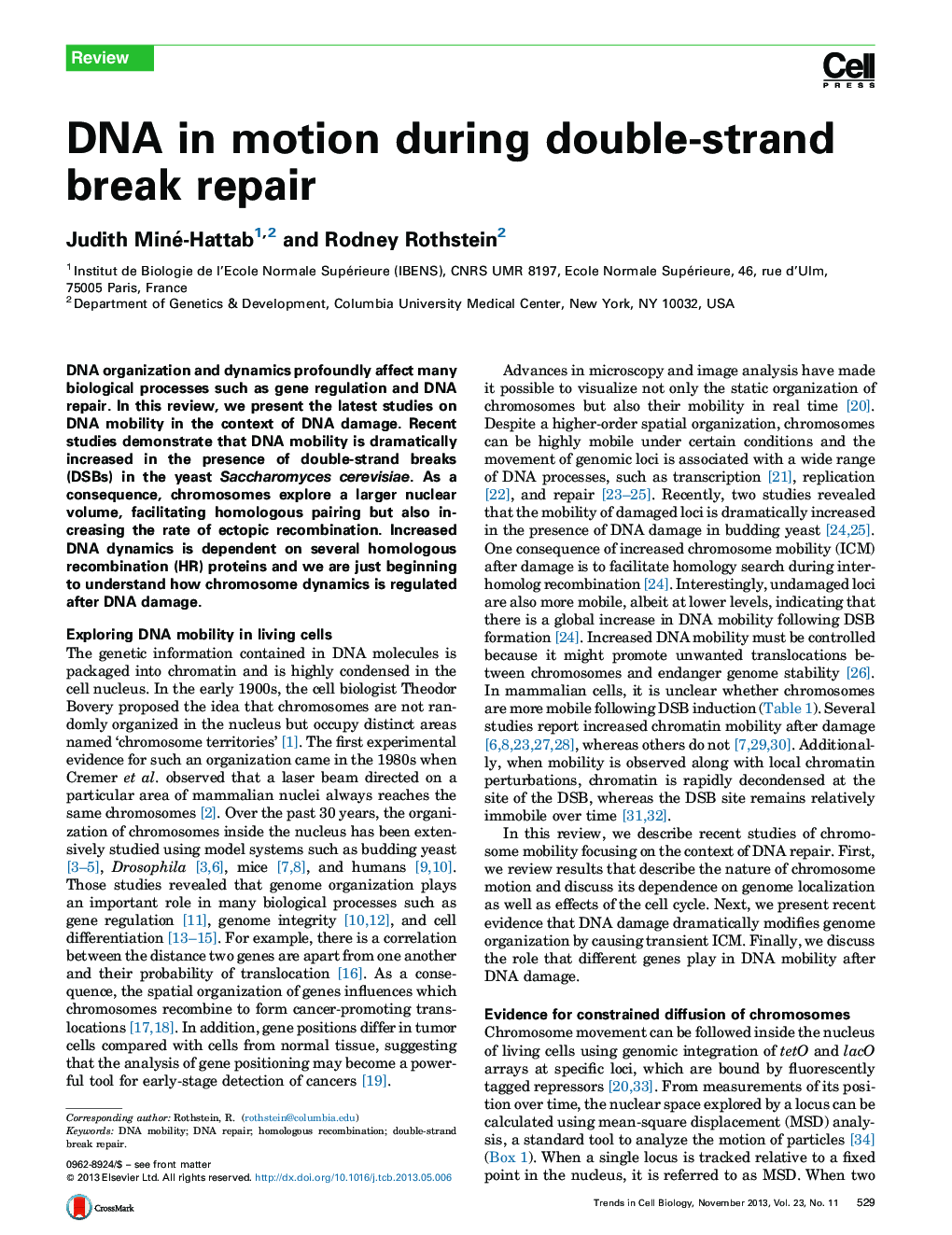| Article ID | Journal | Published Year | Pages | File Type |
|---|---|---|---|---|
| 2204511 | Trends in Cell Biology | 2013 | 8 Pages |
•DNA damage increases the chromosome mobility of both damaged and undamaged loci.•Mobile chromosomes explore the genome more efficiently and facilitate homologous pairing.•Genes associated with the DNA-damage checkpoint and homologous recombination regulate DNA mobility after damage.
DNA organization and dynamics profoundly affect many biological processes such as gene regulation and DNA repair. In this review, we present the latest studies on DNA mobility in the context of DNA damage. Recent studies demonstrate that DNA mobility is dramatically increased in the presence of double-strand breaks (DSBs) in the yeast Saccharomyces cerevisiae. As a consequence, chromosomes explore a larger nuclear volume, facilitating homologous pairing but also increasing the rate of ectopic recombination. Increased DNA dynamics is dependent on several homologous recombination (HR) proteins and we are just beginning to understand how chromosome dynamics is regulated after DNA damage.
